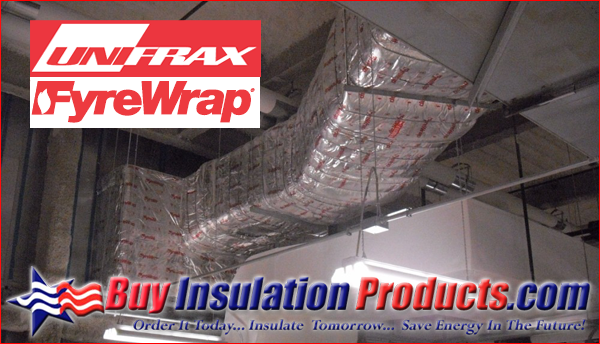Grease Duct & Kitchen Exhaust Duct Insulation Requirements
Posted by BIP on 19th Mar 2015
There's a lot of confusion when it comes to grease duct insulation for fire protection. We know which product to use; foil encapsulated ceramic blankets such as Unifrax's Fyrewrap Elite 1.5 or 3M's Fire Barrier 615+, both industry leaders. These are the correct products for insulating Grease Ducts and Kitchen Exhaust Vent Ducts but how are these products installed? Are they installed like regular duct wrap, just one single layer? Are they overlapped? Do I need to tape the joints? What are exhaust duct insulation requirements? Consult the grease duct insulation fire wrap code and our FAQ page for answers.
Below are the answers to the most common questions, including those concerning exhaust duct insulation requirements:
Q: Can I install just a single layer of fire blanket on my Grease Duct?
A: It depends... If you are using 3M's Fire Barrier 615+ the answer is always NO, you must put an additional second layer over the first layer all the time.
If you are using Unifrax's Fyrewrap Elite 1.5, the answer is sometimes. Fyrewrap Elite 1.5 is unique in that it has both a single layer and a double layer insulation system for Grease Ducts. Most newer building codes require a double layer and will most likely include the requirement that your installed system must meet ASTM E 2336. Installing a single layer will not meet this duct insulation requirement, so you are better off asking before quoting or installing the single layer system.
*2021 Update: Unifrax Fyrewrap Elite 1.5 requires double layer installation on all grease ducts per ASTM E-2336
Q: Why would I want to install a single layer system?
A: The most obvious reason is it will cost less than half of the material and labor cost to install a single layer system if possible. This is a major advantage for Unifrax Fyrewrap Elite 1.5.
Q: What do I use to fasten fire blanket insulation to the duct?
A: The use of stainless steel strapping is used to band the insulation onto the exterior of the ductwork. If the width of the duct is greater than 24", use of welded pins is necessary on the bottom of the duct in conjunction with the stainless steel bands. If the width of the duct is greater than 48", welded pins must be used on all sides of the duct.
Q: Do I always need to overlap the insulation?
A: There are only two installations that do not require an overlap, the first being the bottom layer of a double layer insulation system, and the second is if weld pins are used on all sides of the duct. If you are using all weld pins, a "compression joint" can be used on all adjoining pieces of fire blanket. A "compression joint" is where the two pieces of insulation are compressed together and then welded in place.
Q: Do I need to tape all of the seams/joints with foil tape?
A: No, the overlaps and seams do not require any taping. The only part of the installation that requires tape would be using foil tape to seal the foil facining after each cut of the material. This will seal up the insulation jacket to prevent any absorption of grease into the insulation core.
Q: What is the most common double layer insulation installation method?
A: There are three double layer insulation install methods, however we find that the Butt Joint with 3" Overlap method is the most common. This method involved installing the bottom layer with no overlap, just pressing the joints together tightly. The top layer is then installed with the top piece of fire blanket centered over the bottom layer's joint. The next piece of fire blanket is then installed with a 3" overlap on top of the piece next to it. (See Installation Instructions for more in depth details)
Q: Can the fire blanket touch wood framing?
A: Both the Unifrax Fyrewrap Elite 1.5 and 3M Fire Barrier 615+ have zero clearance to combustible testing which means that the fire blanket can touch wood framing, wiring, etc. There are no minimum setbacks which eliminates any worries for the installer.



